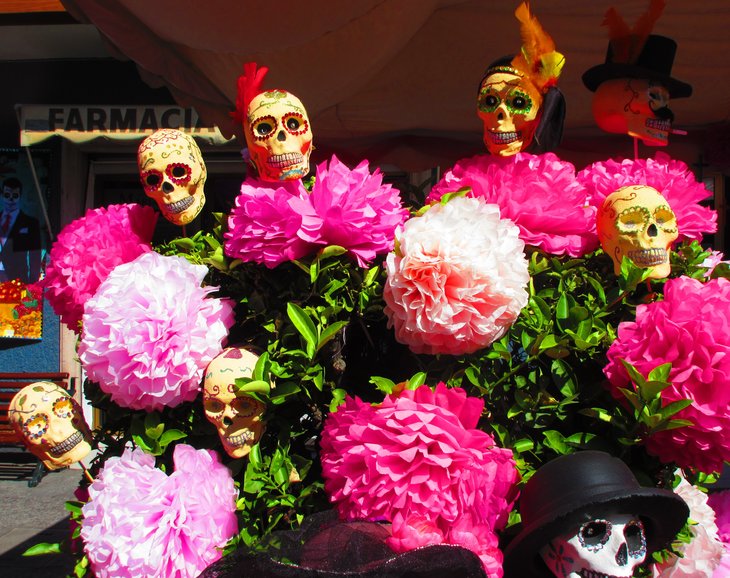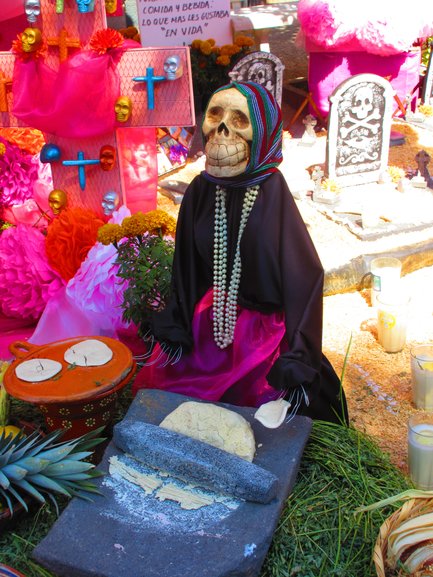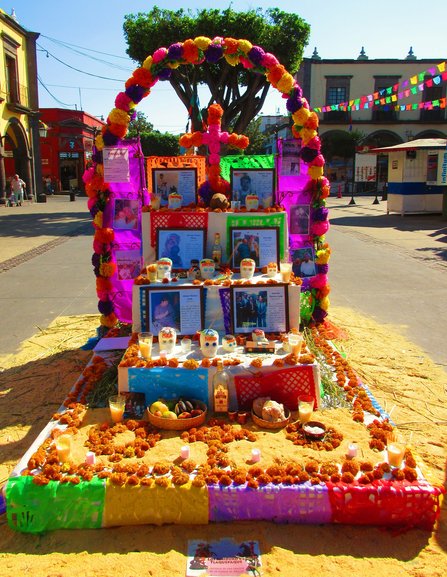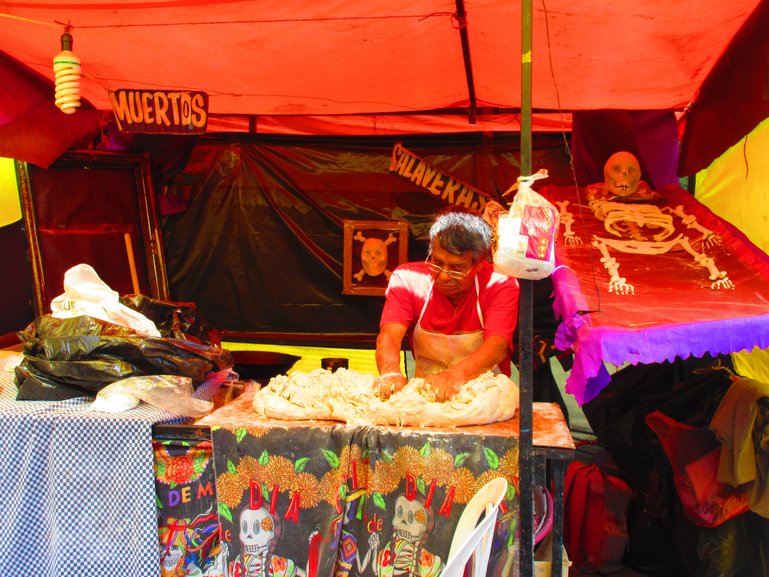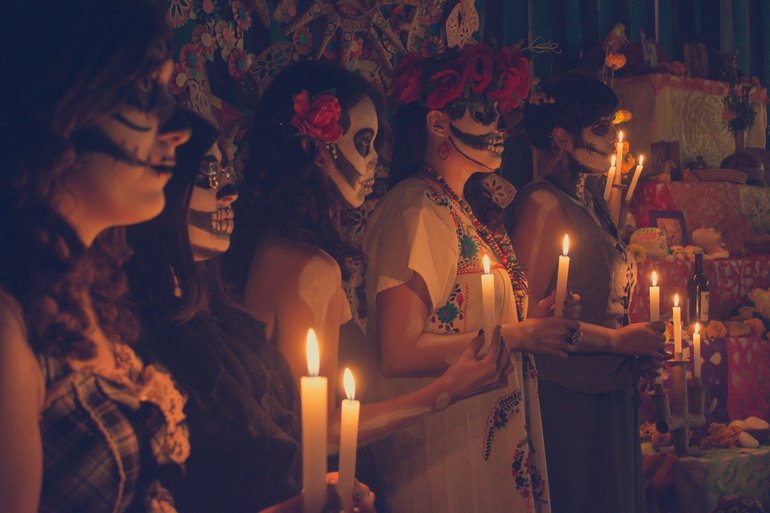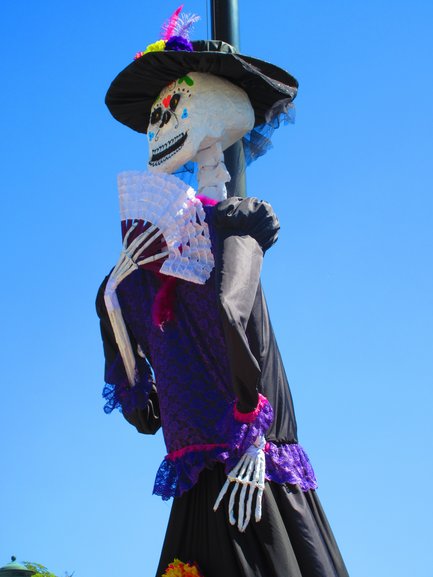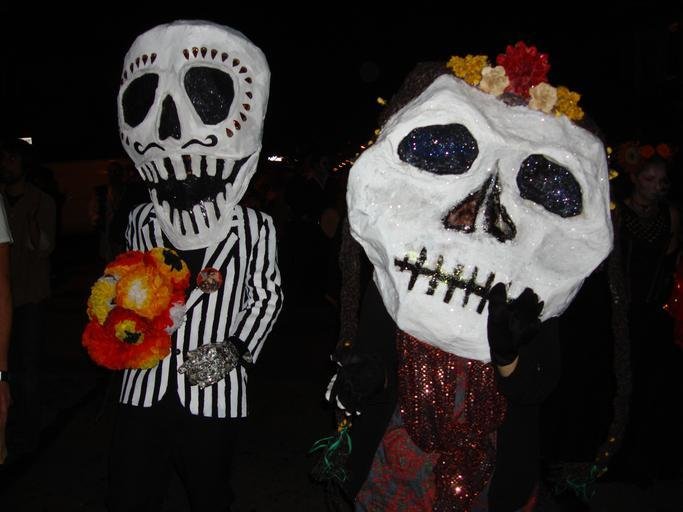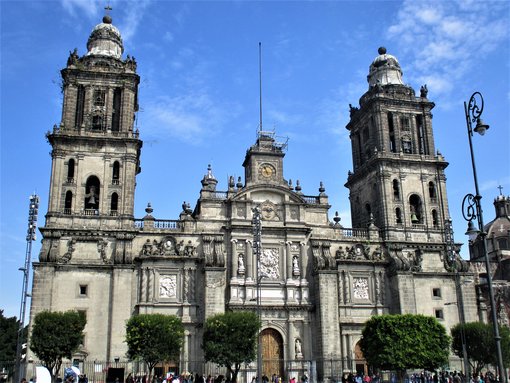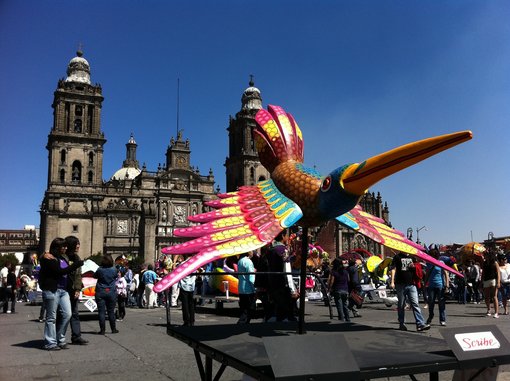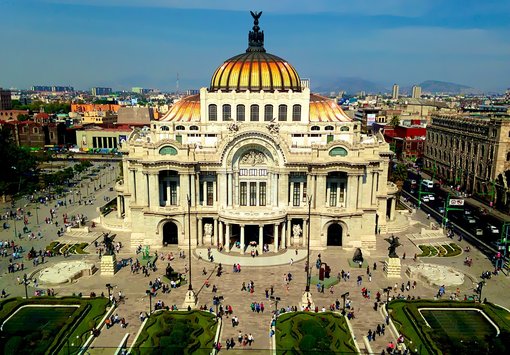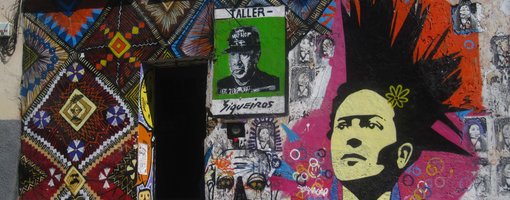Dia de los Muertos is celebrated each year between the 31st October and 2nd November and is one of the most captivating and colourful festivals in the world. The festival honours ancestors who have passed to the spirit world. Day of the Dead is, in fact, both poignant and celebratory, and a time when the living gather to remember the dead. The festival's roots derive from a blend of Catholicism and pre-Hispanic ideology.
We were in Mexico for Dia de Los Muertos and had an amazing time in Tlaquepaque, a suburb of Guadalajara. Indeed, Tlaquepaque is known for its festivities and the altars that lined the streets were nothing less than spectacular. We hope to return for another Day of the Dead someday. Mexico is an incredible country to visit throughout the year, but is especially enchanting during Dia de los Muertos.
This year Day of the Dead will be somewhat subdued due to COVID-19. We, however, take a look at how the festival is celebrated under normal circumstances. We hope that in 2021, Day of the Dead will return to being observed in its usual exuberant fashion.
An Abundance of Altars
Mexico's regions each have their own unique take on Dia de Los Muertos and celebrate in differing styles. Some traditions, however, are consistent throughout the country. Marigolds, known as the 'flower of the dead' are believed to attract the deceased souls back. They are a common sight during the three days of the festival. Additionally, streets are decorated with papel picado (colourful tissue paper cut into shapes) and skeleton images are abundant. Families also congregate at graveyards waiting for the spirits to return.
Furthermore, altars are constructed in public buildings and on the streets prior to the festival. Each of the altars honours someone who has passed on. They are creatively embellished with flowers, candles or sweets together with the deceased's favourite food and also a photo. The altars are also often festooned with papel picado. In fact, each of the altars are a work of art in their own unique way. Day of the Dead markets start opening in early October so that people can start buying all the items required to create their altars.
Bread of the Dead
Additionally, supermarkets, cafes and markets do a roaring trade in pan de muerto (bread of the dead). The bread has a sweet taste and is usually baked in the shape of skulls, bones or a body laying at rest. Furthermore, families spend hours cooking the favourite foods of their departed relatives. The dishes are then placed on altars to tempt the spirits, who are consequently enticed back by the aroma of food. When the spirits have left, the food is eaten by the living.
Gatherings in the Graveyard
Cemeteries buzz with activity and families congregate around the graves. Food is shared, music is played and often a bottle of mezcal is passed around. Additionally, signs are put on the graves to welcome the spirits back. Flower stalls sell marigolds, which are consequently purchased and placed on the graves to assist the spirits in finding their way. Every grave is decorated in its own distinctive style for the spirit to whom it is dedicated.
As night falls, the sight of flickering candles fill the graveyard and groups huddle together under blankets. It is perfectly appropriate for tourists to visit graveyards during Day of the Dead, although it's important to behave respectfully and request permission to take photos. In fact, locals are quite accustomed to tourists and may even talk a little about their traditions and the people that they are honouring. Spending time in a cemetery at this special time, is indeed, a magical experience.
Skeletons Galore
Skeletons are present in Mexico throughout the year and are an integral aspect of Mexican culture. However, they are especially abundant during the Day of the Dead festivities. Playfully symbolising that there is life after death, markets and shops are full of skeletons engaged in a variety of activities. From playing a trumpet to drinking beer, each figure represents the favourite activity of those who have passed away.
One of the most iconic figures is La Calavera Catrina, who is also known as the 'Grand Dame of Death'. Wearing an eye-catching hat and dressed in an ostentatious style, she demonstrates that all are equal in death, rich or poor.
The Best Places to Experience Day of the Dead
Patzcuaro
The island of Janitzio in Patzcuaro is a beguiling place to spend Day of the Dead. Canoes are used by the local Purepecha folk to reach the cemetery at night, which is situated on an island in the middle of a lake. A candle is placed in the bow of each of the boats and hundreds of candles cast a reflection on the lake. It's a stunning sight indeed.
Mexico City
It is, as a matter of fact, only in recent years that Mexico City has hosted a parade. The glitzy parade has a modern twist and consists of a display of floats together with dancers and musicians. It makes its way from Paseo de la Reforma to the Zocalo. In addition, a small village on the outskirts of the city called San Andreas Mixquic, celebrates in a more traditional manner. The graveyard flickers with candlelight and a plethora of processions wind their way through the cobbled streets.
San Miguel de Allende
The colonial city of San Miguel de Allende hosts a 'Catrina Parade', which takes place after of a week-long party and is held on the 1st November each year. Hundreds of people hit the streets dressed as the Day of the Dead icon, Catrina. The city, does in fact, have a large ex-pat community and the parade is popular with everyone - ex-pats and locals along with tourists. Additionally, throughout the week, there are all manner of events relating to Day of the Dead. Art shows and live music, together with dances and talks take place.
Oaxaca
Oaxaca is known for its artistic community and, in particular, the colourful handmade fantasy figures produced there. Locals attire themselves in creative, and sometimes bizarre costumes, for the many parades which take place throughout the city. Additionally, a huge sand tapestry is on show at the Palacio de Gobierno (Town Hall). Furthermore, the villages around Oaxaca are worth a visit during the festival. Many of the indigenous people maintain a traditional lifestyle and consequently celebrate Dia de los Muertos in their own unique way.
